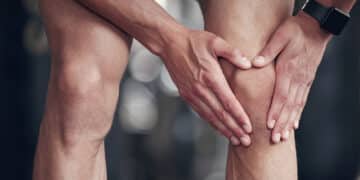The latest findings in physiotherapy and rehabilitation
The latest findings in physiotherapy research
Physiotherapy research is constantly evolving to promote innovative and evidence-based treatment methods. Various studies and research projects have made significant advances that have the potential to revolutionize the practice of physical therapy. This article provides an overview of some of the latest research findings.
Neuroplasticity and movement training
Progress in the treatment of myofascial pain syndromes
Myofascial pain syndromes are a common problem in physiotherapy. New studies have investigated the effectiveness of various approaches. In particular, the combination of trigger point therapy (IMTT®) and dry needling has shown promising results. A randomized controlled trial has confirmed that these methods together achieve a significant reduction in pain intensity as well as an improvement in muscle mobility. The research emphasizes the importance of creating individualized treatment plans that utilize such combined approaches to achieve optimal results.
Neuroplasticity and movement training
A major focus of current research is on neuroplasticity - the brain's ability to change and adapt. New findings show that specific exercise training can have significant neuroplastic effects that have a positive impact on rehabilitation after injury. A study published in a leading physiotherapy journal confirms that intensive, targeted training can strengthen neural connections and thus accelerate the recovery of motor functions.
This is where Lars Lienhard's Neuroathletic Training (NAT) comes into play, utilizing these principles of neuroplasticity. Lars Lienhard, a pioneer in this field, describes NAT as an approach that considers the central nervous system as an integral part of training. His methods are used both in elite sport and in rehabilitation. The training aims to activate specific neuronal networks and improve the efficiency of movement patterns.
The use of NAT in rehabilitation can be particularly beneficial after neurological injuries. For example, patients who have suffered a stroke or spinal cord injury can benefit from exercises specifically designed to promote neural plasticity and restore motor function. Through targeted exercises that combine sensory and motor stimuli, the brain can develop more sustainable and better organized neural connections.
In competitive sports, athletes use NAT to increase their movement efficiency and improve their athletic performance. By training specialized neural networks, athletes can react faster and more precisely to changing game situations. These findings from sport offer valuable insights for rehabilitative physiotherapy, as they highlight the importance of integrating the central nervous system into training planning.
Neuroplasticity in everyday life
In addition to its applications in rehabilitation and sport, neuroplasticity also has a significant impact on our everyday lives. The brain's ability to change through experience and learning processes enables us to learn new skills, adapt to changing life circumstances and optimize cognitive functions. An example of this is relearning simple motor skills after an injury or losing a skill if it is not practiced regularly.
Activities such as learning a new language, playing a musical instrument or even practicing a new sport can promote neuronal plasticity and strengthen cognitive functions. This adaptability of the brain ensures that we can continue to learn and develop throughout our lives.
Use of technology in physiotherapy
Technological innovations are playing an increasingly important role in physiotherapy. Current research is focusing on the use of wearables and telemedicine to monitor and improve patient care. Wearables such as sensors and tracking devices can help analyze movement patterns and provide real-time feedback. A study has shown that patients who use wearables show higher compliance with home exercises and make faster progress as a result. Telemedicine also enables continuous care, especially for patients in remote areas or with limited mobility.
Evidence-based lymphatic drainage
Manual lymphatic drainage is a proven method for supporting lymph flow and reducing swelling. Recent studies have investigated how this technique can be combined with other therapies to increase its effectiveness. A systematic review found that lymphatic drainage combined with compression therapy and targeted exercise led to better results in terms of swelling reduction and functional improvement. This shows the importance of a holistic approach that integrates several treatment methods.
Prevention and management of chronic pain
Chronic pain is a complex and widespread problem. 
Conclusion
The latest research findings in physiotherapy open up many new possibilities for the treatment and rehabilitation of patients. From the integration of technological advances to the use of neuroplasticity and multidisciplinary approaches to pain management, the studies show the importance of using evidence-based methods and creating individualized treatment plans. Of particular note are the advances in the field of neuroplasticity, supported by methods such as neuroathletic training, which can be ground-breaking in both sport and rehabilitation. These developments underline our commitment to staying at the cutting edge of science and providing the best possible care for our patients.
Categories
- Osteoarthritis
- Leg
- Extensions
- Dry needling
- Elbow
- Foot
- Balance
- Hand
- Hip
- Pine
- Knee
- Headache
- Lymphatic drainage
- Mobilization
- Muscle pain
- Myofascial therapy
- Neck pain
- Physiotherapy Höngg
- Physiotherapy Wipkingen
- Physiotherapy Zurich
- Rehabilitation
- Back pain
- Shoulder arm
- Shoulder pain
- Pregnancy
- Dizziness
- Sports
- Trigger points
- Exercises
- Lower leg
- Injury prevention
- Wade
- What to do?
- Wound healing
Shoulder pain: causes, treatment, exercises
What is shoulder pain and how does it develop? Shoulder pain is one of the most common complaints of the musculoskeletal system...
Read moreBack pain: understanding and solutions
Back pain: can have many causes Back pain is one of the most common complaints that affect people....
Read moreLumbago - What really helps to relieve the pain
Lumbago - Understanding lower back pain: Important information for you Imagine you are lifting...
Read moreKnee pain - why it occurs and how you can relieve it
Everything you need to know about knee pain: Causes and treatment options Knee pain is a common...
Read more




